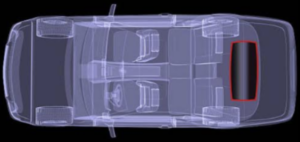Past Research Projects
Active stabilization using actuating canards for a supersonic N-class rocket, Sponsored by Longhorn Rocketry Association (UT Austin), Camille Edwards and Mandy Hiett
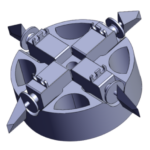 Canards are small, fin-like structures located near the nose of the rocket and are typically found on missiles and low altitude rockets. This research is evaluating the feasibility of using canards on a supersonic, N-class (impulses between 10-20 kN-s) rocket as part of an active stabilization unit. The goal is improve flight characteristics, such as linear trajectory and maximizing apogee (~30,000 ft). This involves developing a robust control system that uses real-time GPS and gyroscopic data to inform the control action.
Canards are small, fin-like structures located near the nose of the rocket and are typically found on missiles and low altitude rockets. This research is evaluating the feasibility of using canards on a supersonic, N-class (impulses between 10-20 kN-s) rocket as part of an active stabilization unit. The goal is improve flight characteristics, such as linear trajectory and maximizing apogee (~30,000 ft). This involves developing a robust control system that uses real-time GPS and gyroscopic data to inform the control action.
Teaching Mechanics of Materials in an undergraduate engineering course using service-learning, Approved IRB research study (UT Austin), Dr. Adrian Rodriguez
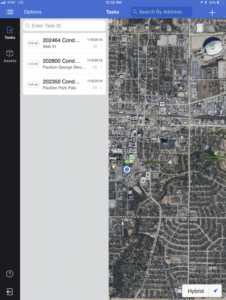
The implementation of experiential learning opportunities in undergraduate courses provides students an alternative hands-on learning methodology that can supplement the traditional lecture-style approach. This research study implements a service-learning model used in an undergraduate engineering course in the form of a semester-long project. The project involved partnering with the City of Arlington Parks and Recreation department to assess their 96 public parks that serve its residents. Students organized meetings with the community partner, designed an asset tool, performed park site visits and completed pre-flection and reflection assignments to log their experience. The success of the educational delivery model was assessed by using student surveys and comparing the student’s performance in the course to a control group of students that did not participate in the project.
Increasing solar insolation capture and design optimization of solar trees, Maydha Kohli
 The focus of this project was to design a tree-like structure that optimizes the placement of solar panels which act as the leaves of the tree, thereby drawing inspiration from nature (also known as bio-inspiration). The solar panels are fixed, unlike solar tracking systems, based on optimal surface tilt angle (β) and azimuth rotation angle (γ) which are location-dependent (longitude and latitude coordinates). The minimization of shadow losses due to adjacent solar panels is also factored in order to maximize the total solar insolation capture (e.g. global horizontal irradiance, GHI) on a monthly and annual basis.
The focus of this project was to design a tree-like structure that optimizes the placement of solar panels which act as the leaves of the tree, thereby drawing inspiration from nature (also known as bio-inspiration). The solar panels are fixed, unlike solar tracking systems, based on optimal surface tilt angle (β) and azimuth rotation angle (γ) which are location-dependent (longitude and latitude coordinates). The minimization of shadow losses due to adjacent solar panels is also factored in order to maximize the total solar insolation capture (e.g. global horizontal irradiance, GHI) on a monthly and annual basis.
A theoretical approach to capturing, storing and re-purposing carbon dioxide emitted by internal combustion engines, Blake S. Keene and Tyler D. Cronin
In order to reduce automobile greenhouse gas emissions, innovators have focused on developing renewable energy vehicles: a long-term solution to a paramount global problem. This work aims to provide a more realistic, short-term solution to mitigate CO2 emissions by using a theoretical approach to analyze the most feasible and effective method of capturing, storing, and re-purposing the carbon dioxide generated by internal combustion engines. The investigated system uses exhaust waste heat to power an Organic Rankine cycle with an integrated Temperature Swing Adsorption cycle, which effectively captures CO2. A liquid CO2 pressure vessel is designed to store the captured liquid CO2 which can then be off-loaded from the vehicle and transported to be re-used for numerous applications including but not limited to green fuels, fertilizers, and carbonated beverages. The proposed CO2 capture system can capture up to 90% of the emitted carbon dioxide from the post-combustion exhaust stream, which is validated using a theoretical model and supported by thermodynamic calculations.
A power-assist, electric wheelchair design with user dignity considerations, Baxter Gonzalez
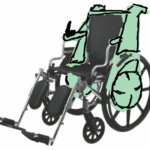
Innovations in wheelchair design often fail to consider the user’s self-esteem and fall short in doing so with the overall appearance of the wheelchair. This work aimed to incorporate aesthetic features that add and maintain a user’s dignity during operation. In addition, a power-assist system, active brake system and radial suspension for omni-directional wheels are currently being investigated for helping wheelchair users navigate terrain with ease.
==> Link to Gallery: Includes initial sketches and design iterations 1-3.
Automated data collection and analysis tool as a portable nano-tech lab (PNL), Sponsored by the Nanomanufacturing Systems Center (NASCENT, UT Austin), Dr. Adrian Rodriguez
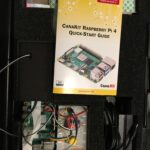
The development of online education programs provides an innovative course delivery model which serves a student population that cannot attend classes on a traditional university campus. These students often comprise working professionals that learn-by-doing and require a personalized learning experience. This work uses portable nanotech labs (PNLs) which were designed as content-specific modules to offer students the necessary hands-on experiences (i.e. industry-relevant experimentation) with the comfort of being located anywhere in the world. A new module was developed as an automated data collection and analysis tool to allow students to process a film coated silicon wafer. A total of 50 images are captured to infer film thickness, evaluate film uniformity and detect particle contamination defects, such as comets and streaks.
Creating opportunities for student engagement in an engineering lab, Sponsored by the Faculty Innovation Center (UT Austin), Dr. Adrian Rodriguez

This project aims to implement “active engagement in learning” — one of eight principles of effective teaching — for the lab section of ME 318M at UT Austin. The goals are to meet the course learning and ABET outcomes, while engaging students in focused experiential learning lab activities. Lab manual content will be restructured such that: (i) questions build on the levels of thinking (Costa’s Levels of Thinking, Bloom’s Taxonomy), (ii) students solve real-world engineering problems to connect understanding and bring relevance to learned concepts, (iii) students collaborate on project-based labs longer than one lab meeting, and (iv) students have opportunities to present their work. The success of the project will be measured using quantitative and qualitative methods, such as aggregate student performance data and surveys.

